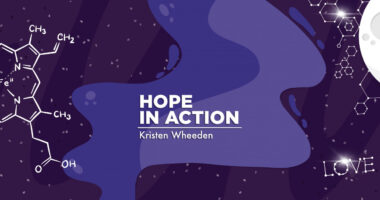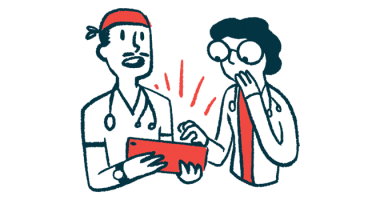What I wish I knew when I was diagnosed with acute porphyria
Members of the porphyria community have a wealth of knowledge to share

Michael pulled on a soft green shirt, its fabric thinning and stained with splatters of white paint. It’s part of his “get stuff done” outfit, symbolizing his intentions to get started on the yardwork. I appreciate my partner’s drive for projects, especially the ones I identify and he executes.
Last weekend, it was mulching a freshly planted, sun-soaked perennial bed in the right of way to the north of our backyard, where two ancient oak trees once stood. “I’ll haul and dump the chips; you can spread them,” Michael offered. He approached the end of the bed, where I’d collapsed minutes before, in an attempt to recharge my inner battery.
I nodded slowly, hesitantly. I wasn’t having a porphyria attack, but I was weak. I didn’t know what my body was capable of. However, I did know that I wanted to help my partner and spend time outdoors. In slow motion, I donned my corresponding “get stuff done” outfit — biker shorts and an oversized tee from the 1990s that I swiped from my dad’s closet.
We spent two hours mulching flower beds that afternoon, and I took periodic breaks. My body was finished before the job was done, so piles of pine chips remained heaped between each blooming hydrangea, awaiting the next time I could devote my precious energy to the task.
Every day, I wake up to the same body with different capabilities. One day, I may have energy even though I’m experiencing acute pain. The next, I may be weak, but otherwise fine. The variables change so often that I’m constantly rewriting the rules and making modifications to my schedule.
Living with acute hepatic porphyria (AHP) is manageable but challenging. My diagnosing doctor wasn’t familiar with the disease and wasn’t able to prepare me for how life with it would look. Following are three things I wish I’d been told when I received my AHP diagnosis.
With treatment, you can manage it
I did what anyone does after receiving a rare disease diagnosis: I Googled it. Up popped case studies about people passing away without treatment or after receiving an unsafe drug. It was an unnerving search-results list for someone who’s already sick and overwhelmed.
A diagnosis of AHP is not a death sentence. Disease triggers are well known and somewhat avoidable. Plus, there are two approved medications to prevent and treat acute attacks.
After six years of managing AHP, I’ve made accommodations and accepted accompanying limitations. I never miss my annual liver screening and stay on top of my monthly labs. But I have no control over how this disease might affect my life span, and I choose not to concern myself with those statistics.
Get involved in research
Scientists have so much to learn about the porphyrias, but they can’t conduct research without participants. One of the first things I did after diagnosis was learn about current studies and sign up for those I was eligible for.
Frequently, companies use surveys and interviews to learn more about life with rare disease. For example, patients and caregivers can create profiles on Rare Patient Voice and receive research opportunities straight to their inbox, many of which offer payment. Not all research studies are right for everyone, and signing up to participate is a deeply personal decision.
Find a community
These days, it’s easy to connect with others living with porphyria all over the world. The American Porphyria Foundation is a patient-focused advocacy organization that connects people affected by all types of porphyria. Members can meet virtually several times a month through activities such as the Porphyria Partners program, “Let’s Talk Porphyria” Zoom calls, and a book club.
The single most important source of information about AHP are others who live with the disease. There’s nothing like the sense of ease I feel when I’m fortunate enough to talk face-to-face with someone who’s regularly affected by acute porphyria. I don’t have to explain or prove myself. My porphyria friends are a unique and reliable source of emotional support.
If you’re new to a porphyria diagnosis, you may need to grieve aspects of your pre-disease life and redefine the expectations for your body. But take comfort in knowing there are treatments to help manage your symptoms. Consider volunteering for research studies and seek out community. Getting diagnosed with AHP can feel deeply lonely, but even if you’re the only one in your town with the disease, there are others online who are excited to meet you.
When I received my AHP diagnosis, I wish someone would’ve discussed with me the adjustments I’d need to make. Perhaps I’d have been more gentle with myself.
Note: Porphyria News is strictly a news and information website about the disease. It does not provide medical advice, diagnosis, or treatment. This content is not intended to be a substitute for professional medical advice, diagnosis, or treatment. Always seek the advice of your physician or other qualified health provider with any questions you may have regarding a medical condition. Never disregard professional medical advice or delay in seeking it because of something you have read on this website. The opinions expressed in this column are not those of Porphyria News or its parent company, BioNews, and are intended to spark discussion about issues pertaining to porphyria.








Comments